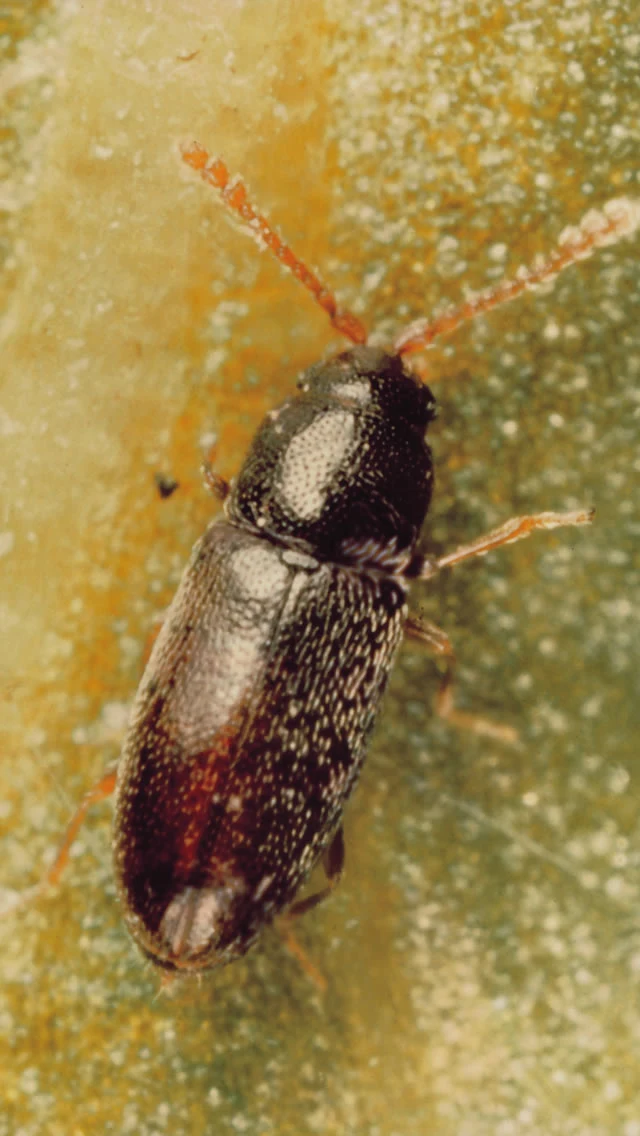
Pygmy Beetle
Atomaria linearis
Identification
Pygmy beetles, as their name suggests, are small brown beetles with elongated bodies which are up to 2 mm long.
Symptoms
The adult beetle bite marks can be seen as small black pits on the hypocotyl and radicle although the cotyledons and first true leaves can also be attacked.
Life-cycle
Adults can overwinter in the soil and in warmer settled conditions they fly to alternative food sources from May to July. Eggs are laid in late summer. The larvae which emerge from these eggs feed on the roots of well established plants which causes little significant economic damage.
Importance
Feeding can begin in March when beet plants are at their most vulnerable. In wetter soil conditions the adults are more active on the surface of the soil and in more unfavourable drier spells they move deeper underground.
Where beetle numbers are high, feeding can cause seedling loss leading to fields with bare patches. Damage tends to be more severe in areas where beet is grown intensively. Alternative host crops include fodder beet, beetroot and other root brassicas.
Threshold
None established.

Pygmy beetle adult

Pygmy beetle damage

Pygmy beetle adult


